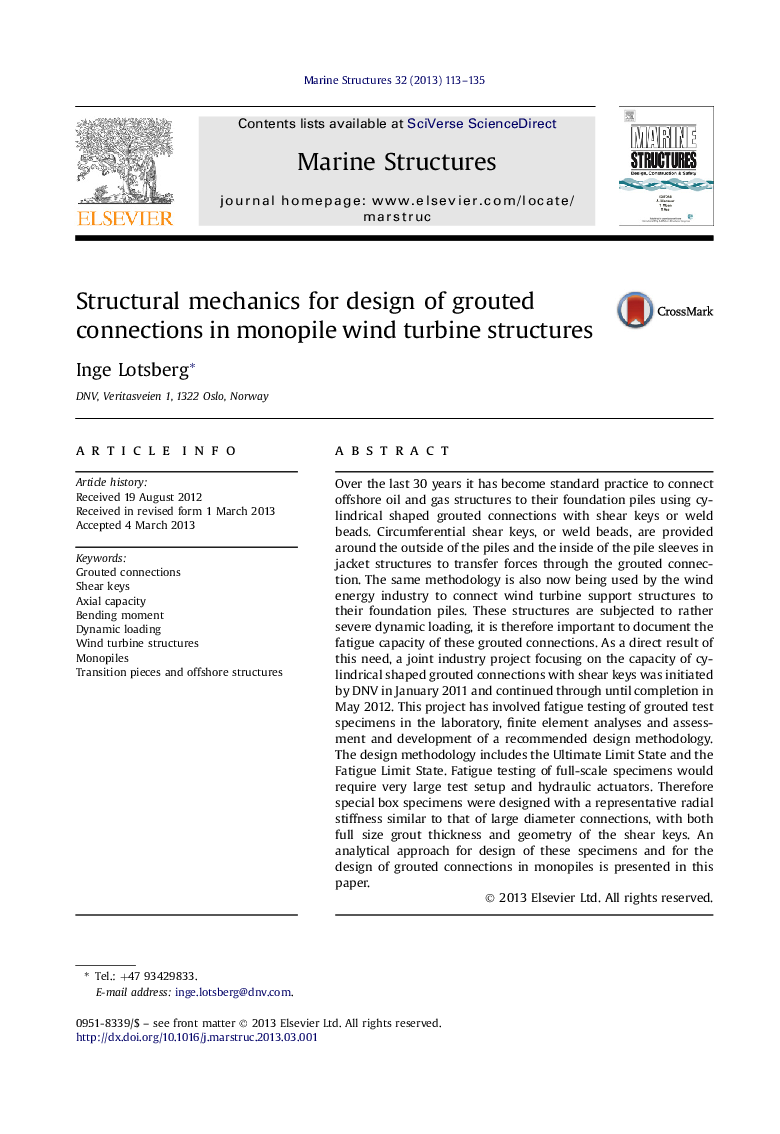| کد مقاله | کد نشریه | سال انتشار | مقاله انگلیسی | نسخه تمام متن |
|---|---|---|---|---|
| 294274 | 511369 | 2013 | 23 صفحه PDF | دانلود رایگان |

Over the last 30 years it has become standard practice to connect offshore oil and gas structures to their foundation piles using cylindrical shaped grouted connections with shear keys or weld beads. Circumferential shear keys, or weld beads, are provided around the outside of the piles and the inside of the pile sleeves in jacket structures to transfer forces through the grouted connection. The same methodology is also now being used by the wind energy industry to connect wind turbine support structures to their foundation piles. These structures are subjected to rather severe dynamic loading, it is therefore important to document the fatigue capacity of these grouted connections. As a direct result of this need, a joint industry project focusing on the capacity of cylindrical shaped grouted connections with shear keys was initiated by DNV in January 2011 and continued through until completion in May 2012. This project has involved fatigue testing of grouted test specimens in the laboratory, finite element analyses and assessment and development of a recommended design methodology. The design methodology includes the Ultimate Limit State and the Fatigue Limit State. Fatigue testing of full-scale specimens would require very large test setup and hydraulic actuators. Therefore special box specimens were designed with a representative radial stiffness similar to that of large diameter connections, with both full size grout thickness and geometry of the shear keys. An analytical approach for design of these specimens and for the design of grouted connections in monopiles is presented in this paper.
► Box specimens simulating large diameter connections was developed and tested.
► Analytical approach for design of grouted connections in monopiles was developed.
► The analytical approach has been compared with laboratory test data.
► The design procedure is in agreement with the measured laboratory data.
Journal: Marine Structures - Volume 32, July 2013, Pages 113–135